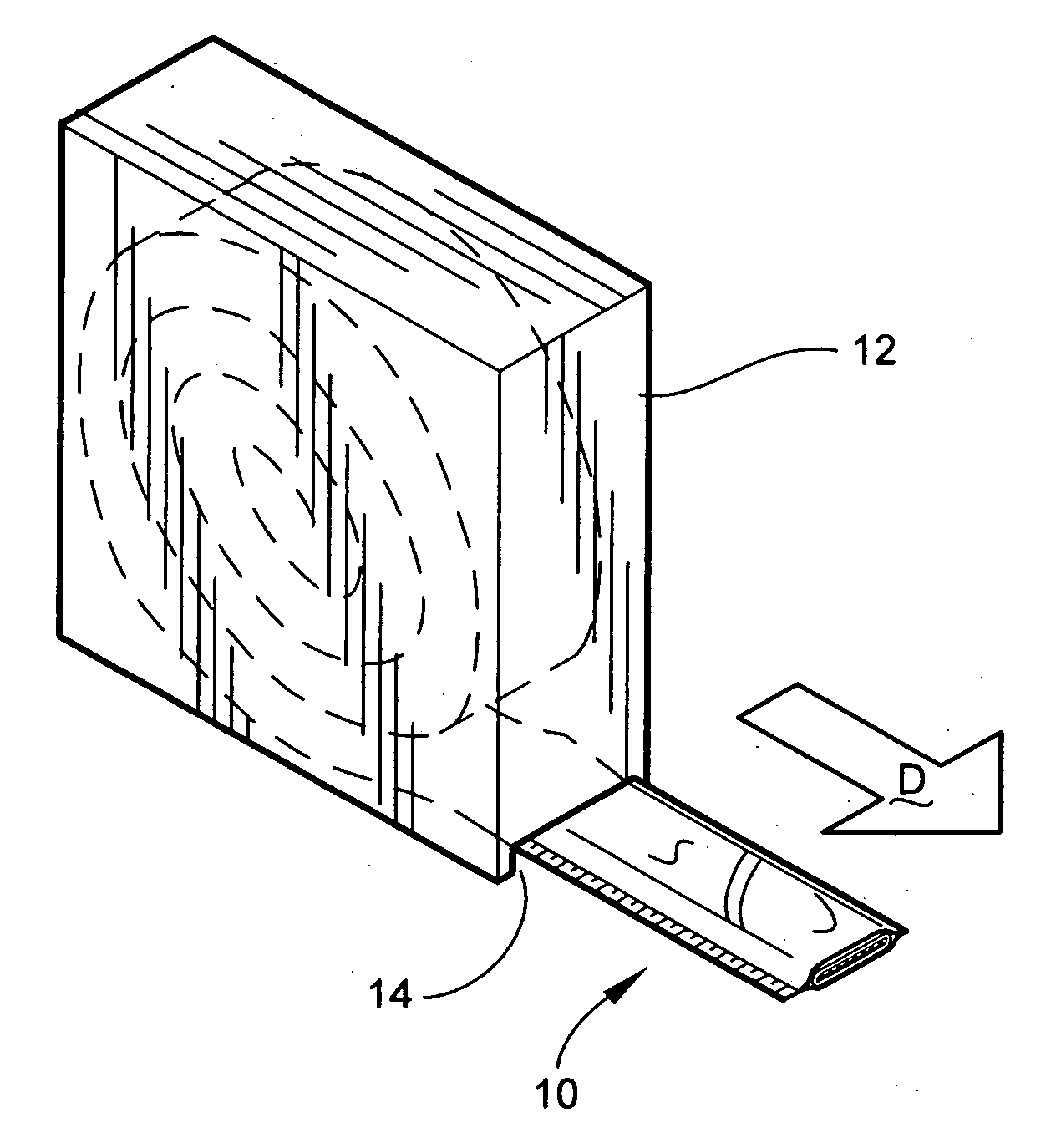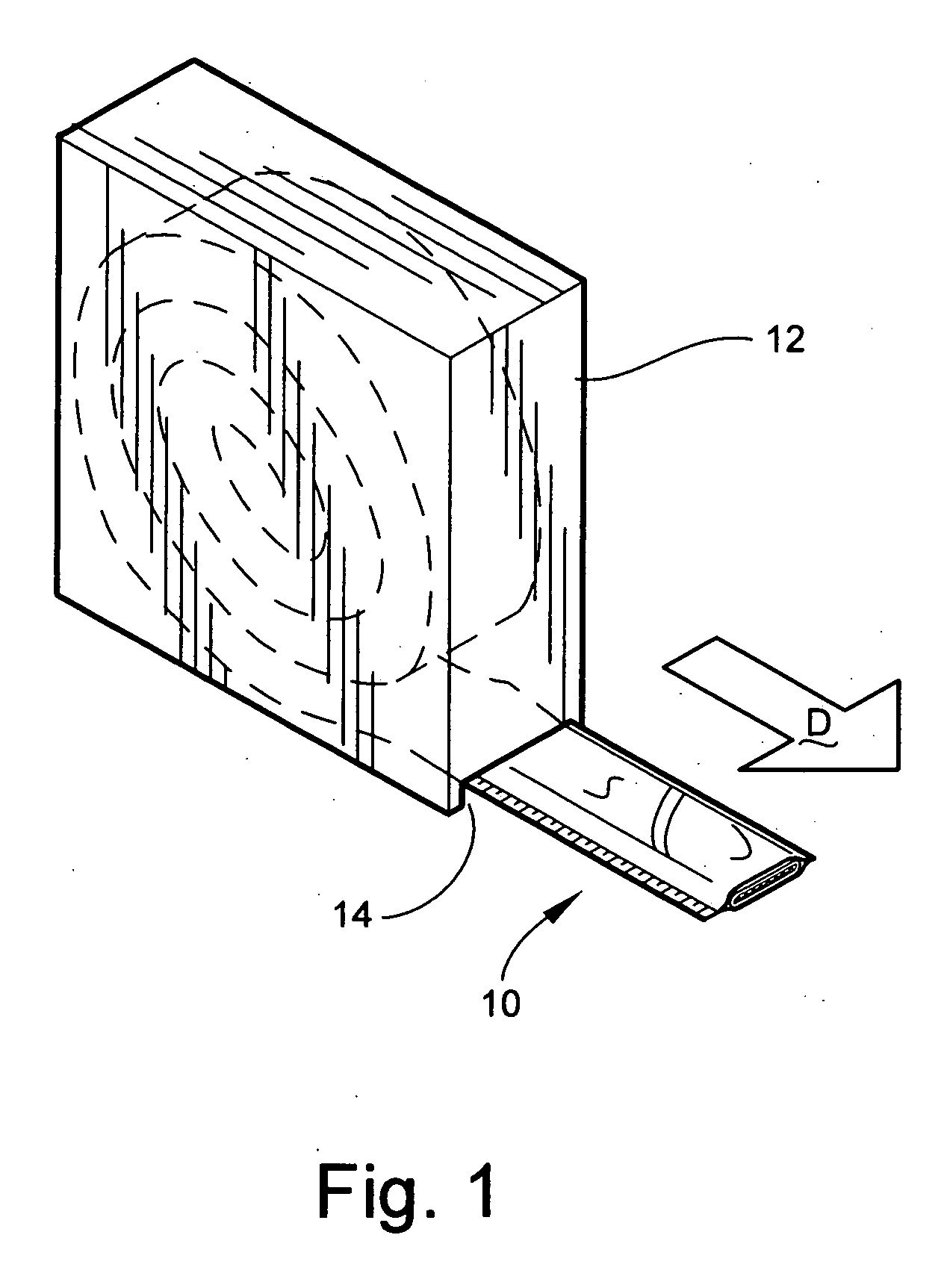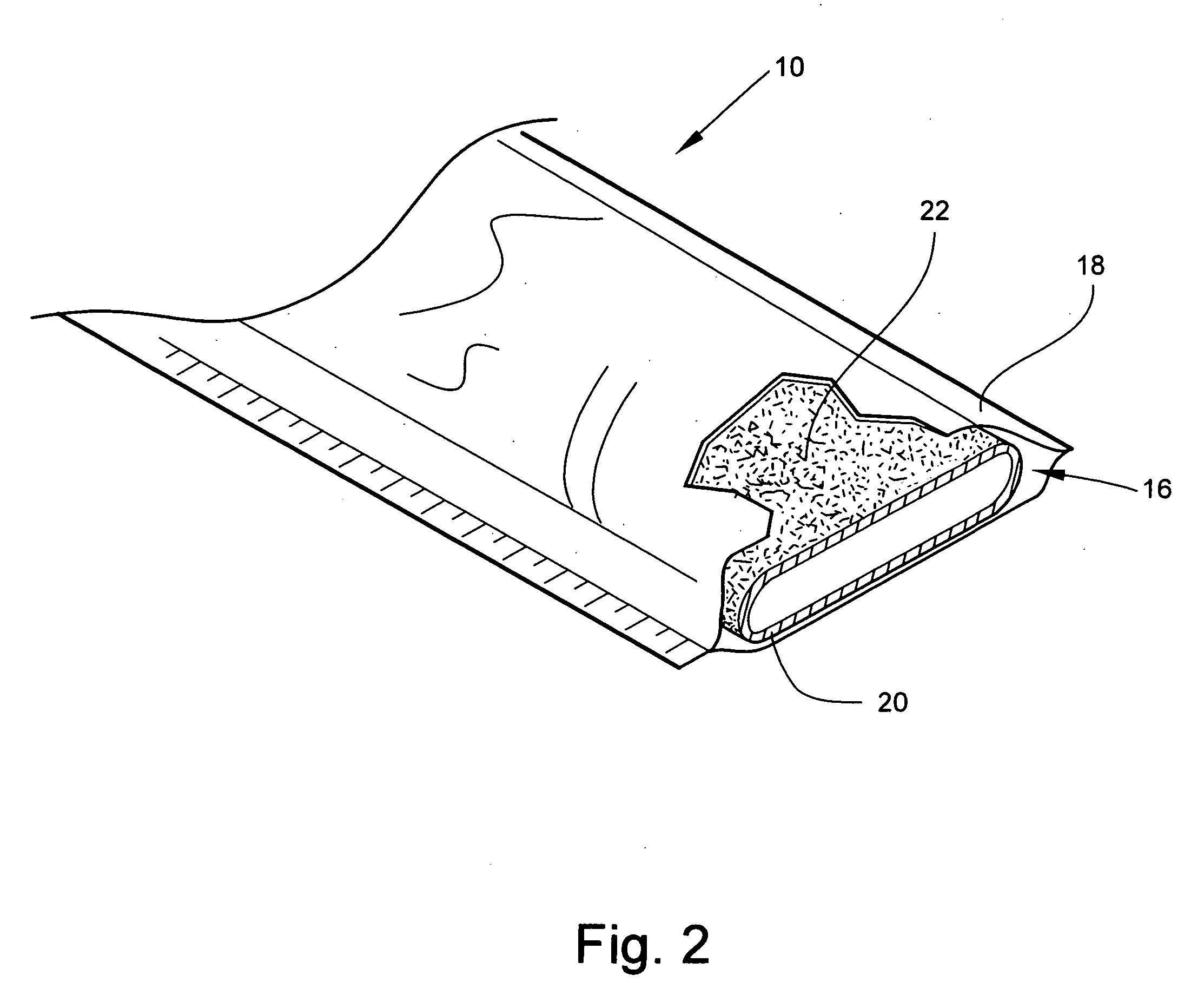Orthopedic fiberglass bandage with a non-fray substrate
a knitted fiberglass and substrate technology, applied in the field of orthopaedic medicine and knitted fiberglass fabrics, can solve the problems of immobilization of a body member, presently used knitted fiberglass materials in bandages or other composite materials, and high-modulus yarns such as fiberglass as resin reinforcements, etc., to achieve the effect of facilitating consistency and conformity
- Summary
- Abstract
- Description
- Claims
- Application Information
AI Technical Summary
Benefits of technology
Problems solved by technology
Method used
Image
Examples
Embodiment Construction
[0032] Referring now specifically to the drawings, a medical bandaging product 10 according to a preferred embodiment of the invention is shown generally in FIG. 1. The bandaging product 10 may be sold in any convenient length and is rolled into a coil and positioned within a suitable dispenser 12. While the bandaging product 10 may be sold in any convenient length and be positioned within any suitable dispenser 12, storage container, package or box, a preferred dispenser is one such as that which is illustrated in FIG. 1. The dispenser 12 in FIG. 1 includes a slot 14 defined in a lower corner of the dispenser 12 through which a free end of the bandaging product 10 extends for withdrawing the product 10 from the interior of the dispenser in the direction “D” shown.
[0033] Referring now to FIG. 2, the structure of the bandaging product 10 is shown. The bandaging product 10 includes an elongate medical bandaging material 16 packaged within a moisture-proof foil sleeve 18. Although the...
PUM
 Login to View More
Login to View More Abstract
Description
Claims
Application Information
 Login to View More
Login to View More - R&D
- Intellectual Property
- Life Sciences
- Materials
- Tech Scout
- Unparalleled Data Quality
- Higher Quality Content
- 60% Fewer Hallucinations
Browse by: Latest US Patents, China's latest patents, Technical Efficacy Thesaurus, Application Domain, Technology Topic, Popular Technical Reports.
© 2025 PatSnap. All rights reserved.Legal|Privacy policy|Modern Slavery Act Transparency Statement|Sitemap|About US| Contact US: help@patsnap.com



